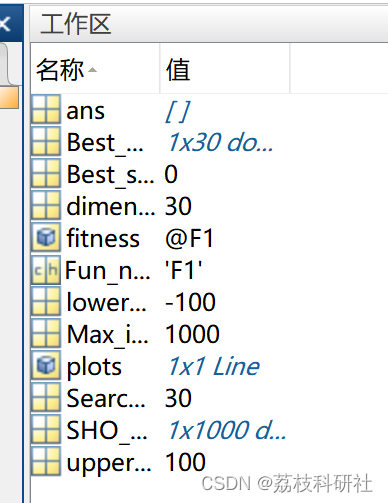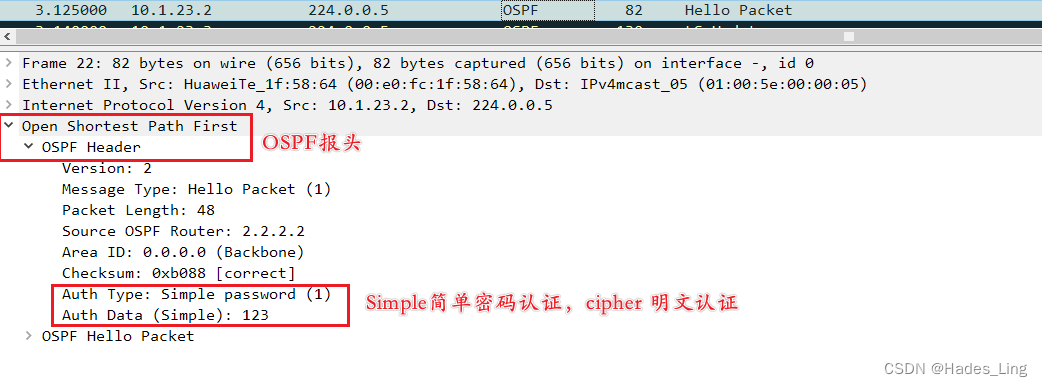👨🎓个人主页:研学社的博客
💥💥💞💞欢迎来到本博客❤️❤️💥💥
🏆博主优势:🌞🌞🌞博客内容尽量做到思维缜密,逻辑清晰,为了方便读者。
⛳️座右铭:行百里者,半于九十。
📋📋📋本文目录如下:🎁🎁🎁
目录
💥1 概述
📚2 运行结果
🌈3 Matlab代码实现
🎉4 参考文献
💥1 概述
参考文献:

提出了基于自适应适应度-距离平衡选择的随机分形搜索(FDB-SFS)算法。对实验研究中提出的方法的结果进行了统计评估,并与文献中竞争优化算法的结果进行了比较。对比表明,所提出的FDB-SFS算法在寻找最优解方面优于其他算法,并且收敛速度更快达到最优解。根据实验研究结果,所提出的FDB-SFS算法在OPF问题中的优化成本比AO、GBO、GPC、HGS、HHO、RUN、TSO、LSHADE、LSHADE-EPSIN、LSHADE-CNEPSIN、LSHADE-SPACMA和MadDE优化算法好5.7362%、0.0954%、7.6244、0.1785%、2.4329%、1.7408%、1.95317%、3.5486%、2.2007%和1.5203%。
📚2 运行结果


部分代码:
function []=case_1()
[nPop, dimension, maxIteration, lbArray, ubArray] = problem_terminate();
S.Start_Point = nPop;
S.Maximum_Diffusion = 0;
S.Walk = 1; % *Important
S.Ndim = dimension;
S.Lband = lbArray;
S.Uband = ubArray;
S.Maximum_Generation = maxIteration;
P = zeros(S.Start_Point,S.Ndim);
%Creating random points in considered search space=========================
point = repmat(S.Lband,S.Start_Point,1) + rand(S.Start_Point, S.Ndim).* ...
(repmat(S.Uband - S.Lband,S.Start_Point,1));
%==========================================================================
%Calculating the fitness of first created points===========================
FirstFit = zeros(1,S.Start_Point);
for i = 1 : size(point,1)
FirstFit(i) = problem(point(i,:));
end
[Sorted_FitVector, Indecis] = sort(FirstFit);
point = point(Indecis,:);%sorting the points based on obtaind result
%==========================================================================
%Finding the Best point in the group=======================================
BestPoint = point(1, :);
fbest = Sorted_FitVector(1);%saving the first best fitness
%==========================================================================
nfeval = 1;
%Starting Optimizer========================================================
while ( ( nfeval < S.Maximum_Generation) )
New_Point = point;
FitVector = Sorted_FitVector;
%diffusion process occurs for all points in the group
if S.Maximum_Diffusion>0
for i = 1 : S.Start_Point
%creating new points based on diffusion process
[NP, fit] = Diffusion_Process(point(i,:),Sorted_FitVector(i),S,nfeval,BestPoint,fhd, fNumber);
New_Point(i,:) = NP; FitVector(i) = fit;
nfeval = nfeval + 1;
if nfeval >= S.Maximum_Generation
S.Start_Point = 0;
break;
end
end
end
fit = FitVector';
[~, sortIndex] = sort(fit);
Pa = zeros(1,S.Start_Point);
%Starting The First Updating Process====================================
for i=1:1:S.Start_Point
Pa(sortIndex(i)) = (S.Start_Point - i + 1) / S.Start_Point;
end
RandVec1 = randperm(S.Start_Point);
RandVec2 = randperm(S.Start_Point);
FDBIndex = fitnessDistanceBalance( point, fit);
for i = 1 : S.Start_Point
for j = 1 : size(New_Point,2)
if rand > Pa(i)
if Sigmoid_Func_1_Increase(S.Maximum_Generation, nfeval)
P(i,j) = New_Point(FDBIndex,j) - rand*(New_Point(RandVec2(i),j) - New_Point(i,j));
else
P(i,j) = New_Point(RandVec1(i),j) - rand*(New_Point(RandVec2(i),j) - New_Point(i,j));
end
else
P(i,j)= New_Point(i,j);
end
end
end
P = Bound_Checking(P,S.Lband,S.Uband);%for checking bounds
for i = 1 : S.Start_Point
Fit_FirstProcess = problem(P(i,:));
if Fit_FirstProcess<=fit(i)
New_Point(i,:)=P(i,:);
fit(i)=Fit_FirstProcess;
end
nfeval = nfeval + 1;
if nfeval >= S.Maximum_Generation
S.Start_Point = 0;
break;
end
end
FitVector = fit;
%======================================================================
[Sorted_FitVector,SortedIndex] = sort(FitVector);
New_Point = New_Point(SortedIndex,:);
BestPoint = New_Point(1,:);%first point is the best
pbest = New_Point(1,:);
fbest = FitVector(1);
point = New_Point;
%Starting The Second Updating Process==================================
Pa = sort(SortedIndex/S.Start_Point, 'descend');
for i = 1 : S.Start_Point
if rand > Pa(i)
%selecting two different points in the group
R1 = ceil(rand*size(point,1));
R2 = ceil(rand*size(point,1));
while R1 == R2
R2 = ceil(rand*size(point,1));
end
if rand < .5
ReplacePoint = point(i,:) - rand * (point(R2,:) - BestPoint);
else
ReplacePoint = point(i,:) + rand * (point(R2,:) - point(R1,:));
end
ReplacePoint = Bound_Checking(ReplacePoint,S.Lband,S.Uband);
replaceFit = problem(ReplacePoint);
if replaceFit < Sorted_FitVector(i)
point(i,:) = ReplacePoint;
Sorted_FitVector(i) = replaceFit;
end
if replaceFit < fbest
pbest = ReplacePoint;
fbest = replaceFit;
BestPoint = pbest;
end
nfeval = nfeval + 1;
if nfeval >= S.Maximum_Generation
break;
end
end
end
end
bestFitness=fbest;
bestSolution=pbest;
fprintf('Best Fitness: %d\n', bestFitness);
disp('Best Solution:');
disp(bestSolution);
end
function p = Bound_Checking(p,lowB,upB)
for i = 1 : size(p,1)
upper = double(gt(p(i,:),upB));
lower = double(lt(p(i,:),lowB));
up = find(upper == 1);
lo = find(lower == 1);
if (size(up,2)+ size(lo,2) > 0 )
for j = 1 : size(up,2)
p(i, up(j)) = (upB(up(j)) - lowB(up(j)))*rand()...
+ lowB(up(j));
end
for j = 1 : size(lo,2)
p(i, lo(j)) = (upB(lo(j)) - lowB(lo(j)))*rand()...
+ lowB(lo(j));
end
end
end
end
function [createPoint, fitness] = Diffusion_Process(Point,Fitness,S,g,BestPoint, fhd, fNumber)
%calculating the maximum diffusion for each point
NumDiffiusion = S.Maximum_Diffusion;
New_Point = zeros(S.Maximum_Diffusion+1,S.Ndim);
fitness = zeros(1,S.Maximum_Diffusion+1);
New_Point(1,:) = Point;
fitness(1) = Fitness;
%Diffiusing Part*******************************************************
for i = 1 : NumDiffiusion
%consider which walks should be selected.
if rand < S.Walk
GeneratePoint = normrnd(BestPoint, (log(g)/g)*(abs((Point - BestPoint))), [1 size(Point,2)]) + (randn*BestPoint - randn*Point); % E艧itlik (11)
else
GeneratePoint = normrnd(Point, (log(g)/g)*(abs((Point - BestPoint))),[1 size(Point,2)]); % E艧itlik (12)
end
New_Point(i+1,:) = GeneratePoint;
end
%check bounds of New Point
New_Point = Bound_Checking(New_Point,S.Lband,S.Uband);
%sorting fitness
for i = 2 : size(New_Point,1)
fitness(i) = problem(New_Point(i,:));
end
[fit_value,fit_index] = sort(fitness);
fitness = fit_value(1,1);
New_Point = New_Point(fit_index,:);
createPoint = New_Point(1,:);
%======================================================================
end
🌈3 Matlab代码实现
🎉4 参考文献
部分理论来源于网络,如有侵权请联系删除。
[1]Duman, S., Kahraman, H. T., Kati, M., "Economical operation of modern power grids incorporating uncertainties of renewable energy sources and load demand using the adaptive fitness-distance balance-based stochastic fractal search algorithm", Engineering Applications of Artificial Intelligence, Volume 117, Part A, 2023, 105501,https://doi.org/10.1016/j.engappai.2022.105501.






